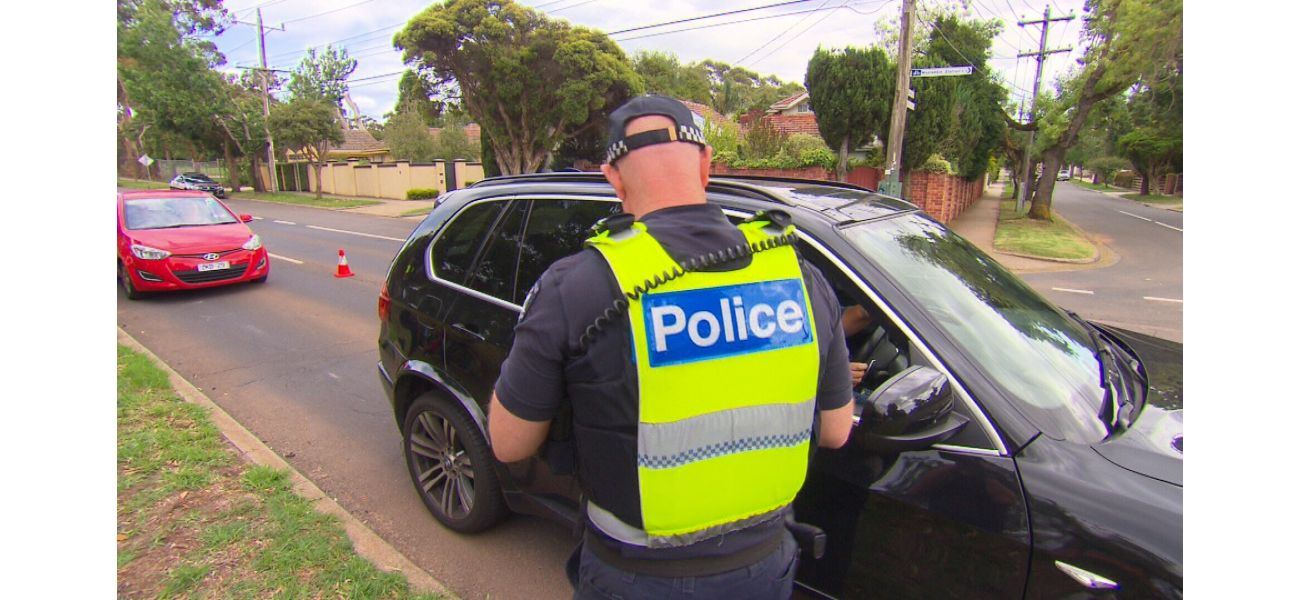Drug driving violations increase dramatically in New South Wales, rising by 836%.
The number of drug drivers charged in NSW has drastically increased from 1409 in 2014 to 13,815 in 2023.
October 23rd 2024.

In the past decade, drug driving offences in one Australian state have seen a significant increase of 836 per cent. This concerning statistic has been highlighted by the latest data released by the NSW Bureau of Crime Statistics and Research, painting a dark picture of drug use in the state. The numbers reveal a shocking rise in the number of individuals charged with drug driving, from 1409 in 2014 to a staggering 13,815 in 2023.
The BOCSAR report attributes this dramatic spike in offences to the expansion of the Mobile Drug Testing program in NSW. The program, which was first implemented in 2007 as part of a road safety initiative, has increased roadside testing capacity from 20,000 to 156,000 per year. Additionally, NSW police have been targeting repeat drug-driving offenders, further contributing to the rise in charges.
While the state average for drug driving detections sits at around 200 per 100,000 people, several regional areas have recorded higher than average rates. The worst-performing region, with a shocking 1884 people per 100,000, was Broken Hill in the state's far west. This was followed by Cootamundra-Gundegai, Snowy Monaro Regional area, Walgett, Glen Innes Severn, Wentworth, Lismore, Moree, and Tenterfield.
The data also revealed some interesting trends among offenders. It showed that they tend to be older individuals who test positive for methamphetamine and have a prior drug driving charge to their name. Jackie Fitzgerald, the executive director of BOSCAR, believes that these figures are a testament to the efforts of NSW Police in targeting unsafe drivers and prioritizing road safety.
However, despite the success of the Mobile Drug Testing program, Fitzgerald also notes that the volume of tests is still relatively small compared to the number of registered drivers. This may limit the program's general deterrent effect, which is a cause for concern.
In 2023, around 3.9 million Australians aged 14 and over reported using an illicit drug in the past year. Among these, cannabis and cocaine were the most commonly detected drugs by police in NSW. The Centre for Accident Research & Road Safety estimates that road crashes attributed to cannabis and methamphetamine cost Australians around $480.6m and $125.2m, respectively, every year.
In light of these alarming statistics, it is evident that there is a pressing need for continued efforts to combat drug driving in Australia. The current measures in place, such as the Mobile Drug Testing program, have shown promising results, but more needs to be done to ensure the safety of all road users. With the right strategies and resources, we can work towards reducing the number of drug driving offences and making our roads safer for everyone.
The BOCSAR report attributes this dramatic spike in offences to the expansion of the Mobile Drug Testing program in NSW. The program, which was first implemented in 2007 as part of a road safety initiative, has increased roadside testing capacity from 20,000 to 156,000 per year. Additionally, NSW police have been targeting repeat drug-driving offenders, further contributing to the rise in charges.
While the state average for drug driving detections sits at around 200 per 100,000 people, several regional areas have recorded higher than average rates. The worst-performing region, with a shocking 1884 people per 100,000, was Broken Hill in the state's far west. This was followed by Cootamundra-Gundegai, Snowy Monaro Regional area, Walgett, Glen Innes Severn, Wentworth, Lismore, Moree, and Tenterfield.
The data also revealed some interesting trends among offenders. It showed that they tend to be older individuals who test positive for methamphetamine and have a prior drug driving charge to their name. Jackie Fitzgerald, the executive director of BOSCAR, believes that these figures are a testament to the efforts of NSW Police in targeting unsafe drivers and prioritizing road safety.
However, despite the success of the Mobile Drug Testing program, Fitzgerald also notes that the volume of tests is still relatively small compared to the number of registered drivers. This may limit the program's general deterrent effect, which is a cause for concern.
In 2023, around 3.9 million Australians aged 14 and over reported using an illicit drug in the past year. Among these, cannabis and cocaine were the most commonly detected drugs by police in NSW. The Centre for Accident Research & Road Safety estimates that road crashes attributed to cannabis and methamphetamine cost Australians around $480.6m and $125.2m, respectively, every year.
In light of these alarming statistics, it is evident that there is a pressing need for continued efforts to combat drug driving in Australia. The current measures in place, such as the Mobile Drug Testing program, have shown promising results, but more needs to be done to ensure the safety of all road users. With the right strategies and resources, we can work towards reducing the number of drug driving offences and making our roads safer for everyone.
[This article has been trending online recently and has been generated with AI. Your feed is customized.]
[Generative AI is experimental.]
0
0
Submit Comment





